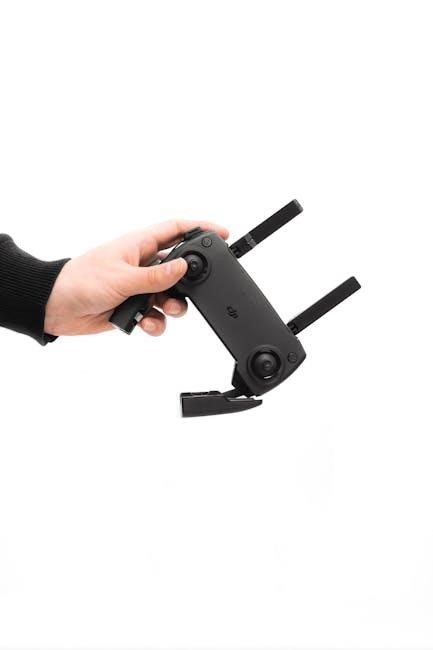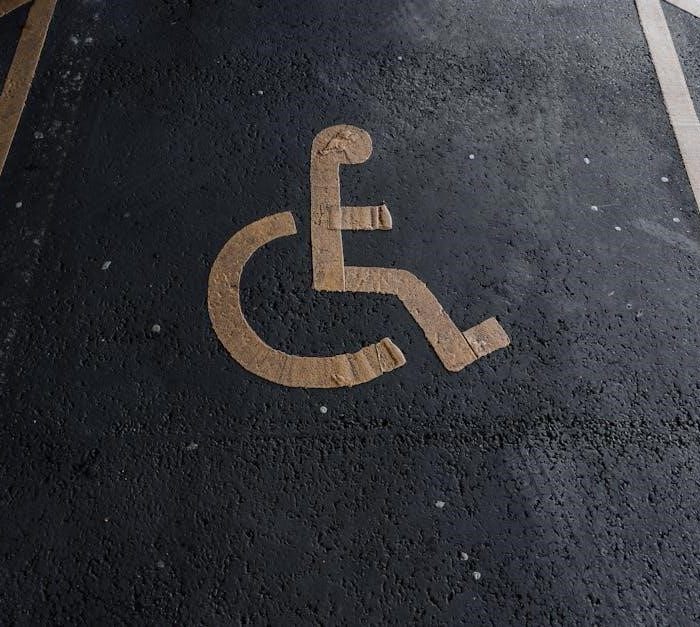The hierarchy of control in manual handling is a structured framework designed to minimize risks associated with manual handling tasks in the workplace.
It provides a systematic approach to identifying and implementing control measures, ensuring the safety and well-being of employees by reducing the likelihood of injuries.
Definition and Purpose
The hierarchy of control in manual handling is a systematic framework used to manage and reduce risks associated with manual handling tasks. It provides a clear, step-by-step approach to identifying and implementing control measures to ensure worker safety. The primary purpose of this hierarchy is to eliminate or minimize the risks of injury by prioritizing the most effective control strategies. It encourages employers to address hazards at their source, rather than relying solely on personal protective equipment (PPE). By following this structured approach, organizations can create a safer working environment, comply with regulations, and promote a culture of risk prevention. The hierarchy is widely recognized as a best practice in occupational health and safety, ensuring that manual handling risks are managed effectively and efficiently.
Overview of the Five Levels of Control
The hierarchy of control in manual handling consists of five distinct levels, each representing a progressively less effective method of risk management. The framework is designed to prioritize controls that eliminate or reduce hazards at their source. The first level, elimination, involves removing the need for manual handling entirely. If elimination is not possible, substitution is considered, replacing hazardous tasks with safer alternatives. Engineering controls come next, focusing on physical modifications to reduce risk. Administrative controls involve procedures and training to manage risks. Finally, personal protective equipment (PPE) is the last resort, protecting workers when other controls are insufficient. This structured approach ensures that the most effective solutions are implemented first, minimizing workplace injuries and enhancing overall safety.
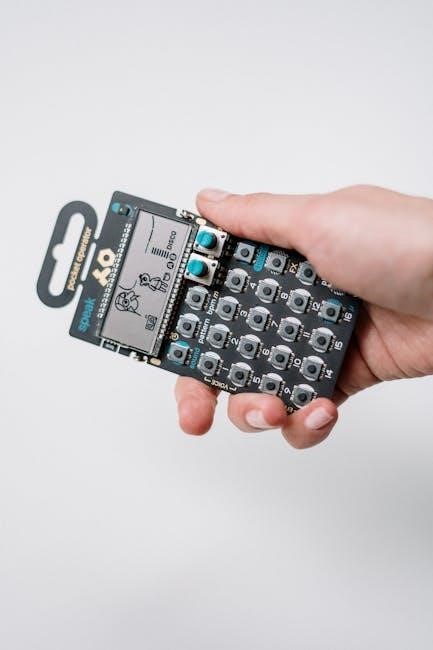
The Five Levels of the Hierarchy of Control
The hierarchy includes five levels: elimination, substitution, engineering controls, administrative controls, and PPE. Each level provides a progressively less effective method of risk management.
Level 1: Elimination
Elimination is the highest and most effective level in the hierarchy of control, focusing on removing manual handling tasks entirely to prevent risks. This can be achieved by redesigning processes, automating tasks, or using mechanical aids like lifts or conveyors. By eliminating the need for manual handling, employers significantly reduce the risk of injuries and ensure compliance with workplace safety standards. This approach is not only cost-effective in the long run but also enhances overall workplace safety by addressing the root cause of potential hazards. Implementing elimination requires a thorough assessment of tasks and workflows to identify opportunities for removal or automation, making it a proactive and sustainable solution.
Level 2: Substitution
Substitution involves replacing hazardous manual handling tasks with safer alternatives to reduce the risk of injury. This step is implemented when elimination is not feasible. Employers can substitute heavy or awkward objects with lighter materials, or use tools and equipment designed to minimize strain. For example, replacing manual lifting with hoists or trolleys can significantly reduce the physical demands on workers. Substitution focuses on modifying the task or object to make it less risky while still achieving the same goal. By introducing safer alternatives, employers can protect workers from musculoskeletal disorders and other injuries associated with manual handling. This approach is both practical and effective, ensuring tasks remain manageable while prioritizing worker safety. Regular reviews of tasks and materials are essential to identify substitution opportunities and maintain a safe working environment. This level emphasizes proactive risk management and adaptability in the workplace.
Level 3: Engineering Controls
Engineering controls are physical modifications or equipment introduced to reduce the risks associated with manual handling tasks. These controls aim to eliminate or minimize the physical demands of a task by providing mechanical solutions. Examples include the use of lifting aids, such as hoists or cranes, and the installation of conveyors or slides to reduce the need for manual lifting or carrying. Adjustable workstations and ergonomically designed tools also fall under this category, as they help to optimize task performance and reduce strain on the body. Engineering controls are generally more reliable than administrative measures because they do not rely on worker behavior or compliance. By integrating these solutions into the workplace, employers can create a safer environment and reduce the likelihood of work-related injuries. Regular maintenance and updates to engineering controls are essential to ensure their effectiveness and longevity in protecting workers. This level is a critical component of the hierarchy, offering practical and sustainable risk reduction strategies.
Level 4: Administrative Controls
Administrative controls are policies and procedures designed to manage risks when elimination, substitution, or engineering controls are not feasible. These measures focus on reducing the frequency or duration of manual handling tasks. Examples include implementing safe work practices, rotating tasks to avoid repetitive strain, and providing regular breaks. Training programs are also a key component, ensuring employees understand proper manual handling techniques and the risks associated with poor practices. Administrative controls rely on worker compliance and are often less effective than physical controls. However, they are essential for addressing risks that cannot be fully eliminated through other means. Employers must regularly review and update these controls to ensure they remain effective in protecting workers from injury. By combining administrative measures with other levels of control, organizations can create a comprehensive safety framework. This approach emphasizes proactive risk management to safeguard employee health.
Level 5: Personal Protective Equipment (PPE)
Personal Protective Equipment (PPE) represents the fifth and final level in the hierarchy of control for manual handling. PPE is used when all other control measures are insufficient to eliminate or reduce risks. Common examples include gloves, back supports, and safety footwear. While PPE provides protection to individual workers, it does not remove the hazard itself. Employers must ensure that PPE is appropriate for the task, properly fitted, and regularly maintained. Training is essential to guarantee that employees understand how to use PPE correctly. Relying solely on PPE is less effective than implementing higher-level controls, as it does not address the root cause of the risk. However, PPE remains a critical last line of defense to prevent injuries when other measures are not feasible. Its use should always be combined with other control strategies to maximize safety outcomes.
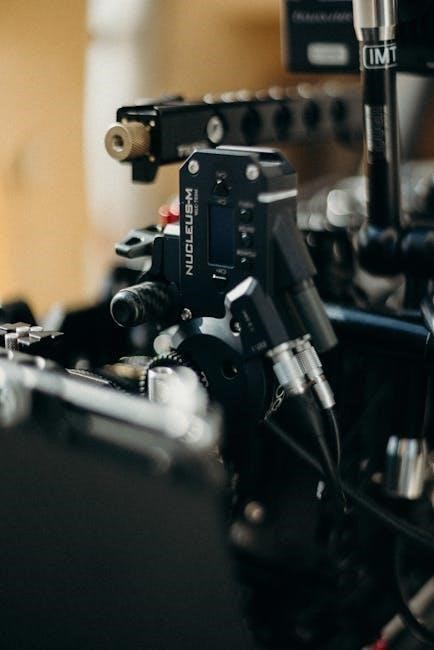
Implementation and Compliance
Implementation involves systematically applying the hierarchy of controls, starting with elimination and moving to PPE. Compliance requires regular audits, training, and monitoring to ensure sustained effectiveness and adherence to regulations.
Conducting Risk Assessments
Risk assessments are a critical first step in applying the hierarchy of control, identifying tasks that involve manual handling and evaluating their potential risks.
They involve analyzing the task, the load, the working environment, and the individual performing the task to determine the likelihood and severity of injury. Employers must consider factors such as the weight, size, and stability of the load, as well as the frequency and duration of the task. Consulting with employees who perform the tasks provides valuable insights into potential hazards. The findings from the risk assessment guide the selection of appropriate control measures, prioritizing higher levels of the hierarchy, such as elimination or substitution, before considering administrative controls or PPE. Regular monitoring and updates to the risk assessment ensure ongoing effectiveness in minimizing manual handling risks.
Developing Training Programs
Effective training programs are essential for ensuring employees understand and apply the hierarchy of control in manual handling tasks.
These programs should cover the principles of the hierarchy, focusing on elimination, substitution, and engineering controls as the primary measures to reduce risks. Training should also include practical techniques for safe manual handling, such as proper lifting postures and load balancing. Employers must tailor programs to the specific needs of their workforce, addressing the unique risks associated with their tasks. Regular refresher courses and updates ensure that employees remain informed about the latest control measures and safe practices. By fostering a culture of safety and continuous learning, organizations can significantly reduce the incidence of manual handling injuries and improve overall workplace safety.
Monitoring and Reviewing Control Measures
Monitoring and reviewing control measures are critical steps in maintaining the effectiveness of the hierarchy of control in manual handling.
Regular inspections and audits should be conducted to ensure that the implemented controls are functioning as intended and remain relevant to the workplace environment. Supervisors and employees must collaborate to identify any gaps or areas for improvement. Feedback from workers involved in manual handling tasks can provide valuable insights into the practicality and effectiveness of the controls. Additionally, incident reports and injury data should be analyzed to assess the ongoing impact of the control measures. Over time, as tasks, equipment, or processes evolve, the controls may need to be updated or adjusted to address new risks. Continuous monitoring ensures that the hierarchy of control remains a dynamic and adaptive system, ultimately enhancing workplace safety and compliance.
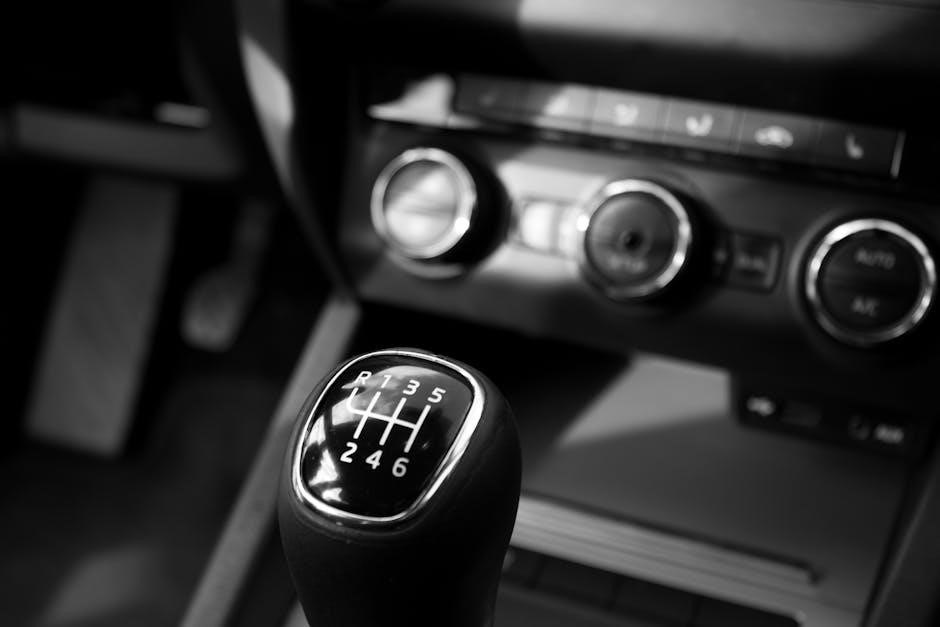
The Importance of the Hierarchy of Control
The hierarchy of control is essential for reducing manual handling risks, preventing injuries, and ensuring compliance with workplace safety standards by prioritizing effective control measures.
Why is it Important?
The hierarchy of control is crucial as it provides a clear, step-by-step approach to managing manual handling risks, ensuring workplaces prioritize the most effective safety measures. By eliminating or minimizing hazards at their source, it reduces the likelihood of injuries and associated costs. This framework aligns with legal requirements and industry standards, helping organizations demonstrate compliance. It also fosters a safer work environment, boosting employee morale and productivity. The hierarchy ensures that control measures are practical, sustainable, and tailored to specific tasks, making it an essential tool for proactive risk management in manual handling activities.
Benefits of Implementation
Implementing the hierarchy of control in manual handling offers numerous benefits, primarily enhancing workplace safety by systematically reducing injury risks. It ensures compliance with health and safety regulations, avoiding legal penalties. Organizations experience cost savings through reduced injury-related expenses, such as medical claims and absenteeism. Additionally, it improves employee well-being and morale, leading to increased productivity. The framework promotes a proactive approach to risk management, fostering a culture of safety. By prioritizing higher-level controls like elimination and substitution, it minimizes reliance on less effective measures like PPE. Overall, the hierarchy of control is a practical and efficient strategy for creating a safer and more sustainable work environment.
The hierarchy of control is a proven framework for minimizing manual handling risks, ensuring a safer workplace and promoting regulatory compliance effectively.

The hierarchy of control in manual handling is a systematic approach to reducing risks associated with manual handling tasks in the workplace. It consists of five levels: elimination, substitution, engineering controls, administrative controls, and personal protective equipment (PPE). Each level provides a progressively less effective means of controlling risks, with elimination being the most effective and PPE the least. Employers are required to implement these controls in order of priority to ensure a safe working environment. This framework not only minimizes the risk of injury but also promotes compliance with health and safety regulations. By following the hierarchy, organizations can create a safer workplace, reduce the likelihood of manual handling injuries, and improve overall employee well-being. Effective implementation of these controls is essential for maintaining a safe and healthy work environment.
Final Thoughts on Effective Manual Handling Practices
Effective manual handling practices are cornerstone to workplace safety, significantly reducing injuries and enhancing productivity. The hierarchy of control serves as a guiding framework, ensuring that employers adopt a proactive approach to risk management. By prioritizing elimination and substitution, organizations can often remove or reduce hazardous tasks altogether. When these aren’t feasible, engineering and administrative controls provide practical solutions to mitigate risks. Finally, personal protective equipment acts as the last line of defense. Training and regular reviews are crucial to maintaining compliance and adaptability in a changing work environment. Ultimately, integrating these strategies fosters a culture of safety, benefiting both employees and employers by preventing injuries and promoting operational efficiency. Continuous improvement and adherence to the hierarchy ensure sustainable workplace safety and well-being for all staff members.
